1. Introduction
Greek mythology, an ancient tapestry of tales and characters, has profoundly shaped our understanding of human nature, relationships, and societal constructs. At its heart lies a pantheon of Olympian deities, each symbolizing unique facets of life and existence. Among them, Hebe stands out as an embodiment of youth and vitality. Revered for her youthful essence, she not only represents the vigor and charm of adolescence but also holds a central position as the cupbearer to the gods, rejuvenating them with the nectar of immortality. Her role in these age-old narratives showcases the ancient Greeks’ deep appreciation for the transient beauty of youth and its pivotal place in the cycle of life and divinity.
| Origin | Greek Mythology |
|---|---|
| Classification | Goddess |
| Family Members | Zeus (Father), Hera (Mother), Ares and Hephaestus (Brothers), Eileithyia and Enyo (Sisters), Hercules (Husband, in some myths) |
| Region | Greece |
| Associated with | Youth, Cupbearer to the Gods, Renewal |
2. Historical Origins and Primary Sources
Hebe in Ancient Texts:
The tapestry of Greek literature offers us glimpses of Hebe across a myriad of ancient texts. Delving into the earliest mentions, one uncovers references to this goddess of youth in some of the foundational works of Western literature. The chronological journey of tracking her legacy takes us from fragmented mentions to detailed portrayals.
The Cornerstones of Greek Epic – “The Iliad” and “The Odyssey”:
Homer’s epic poems, “The Iliad” and “The Odyssey”, while primarily focusing on the Trojan War and the adventures of Odysseus, respectively, also shed light on the intricate world of the Olympian gods. Within these poetic lines, Hebe’s presence, albeit subtle, offers insights into her role within the divine realm. The epics, in their grandeur and detail, provide a rich context for understanding how Hebe, among other deities, intertwined with the lives of mortals and immortals alike.
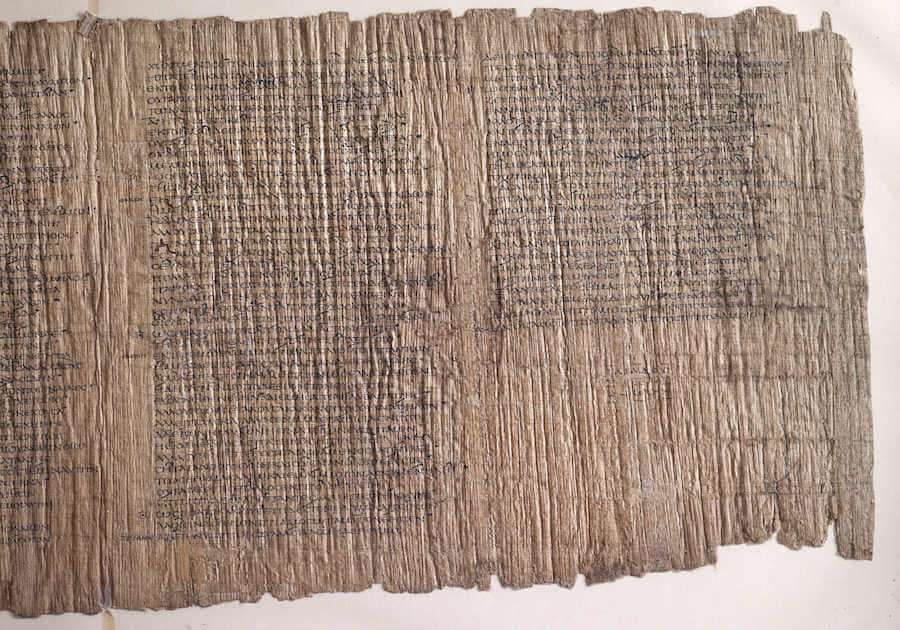
Hesiod’s Works – A Deeper Dive:
While Homer laid the foundational narrative, Hesiod, another ancient Greek poet, offered a more structured account of the cosmos and the gods in his works. His texts, particularly “Theogony,” delve deeper into the lineage of deities and their roles. Through Hesiod’s lens, Hebe emerges not just as a representation of youth but also as an integral part of the divine family tree, emphasizing her significance within the Olympian hierarchy.
3. Hebe’s Role and Responsibilities
The Quintessence of Youth: Hebe’s Ethereal Role:
In the vast pantheon of Greek deities, each god or goddess serves a unique purpose, representing various aspects of human experience and nature. Hebe, with her radiant aura, is the personification of youth. But her role transcends mere representation. In ancient Greek culture, youth was not just a phase of life but symbolized vigor, potential, and the promise of what’s to come. Hebe, in her divine essence, captures this allure, representing not just the physical bloom of youth but also the hope, aspirations, and energy associated with it. Her tales remind us of a time when age was revered, but youth was celebrated.
Cupbearer to the Olympians: A Role of Rejuvenation:
As the cupbearer to the gods, Hebe had a responsibility that went beyond mere service. She provided the nectar and ambrosia that sustained the immortality and vigor of the gods. This role, essential to the very essence of the divine beings, showcases Hebe’s indispensable nature in Olympus. Her task was not just about serving; it was about rejuvenating, ensuring that the gods retained their immortal essence, making her an integral part of the divine proceedings.
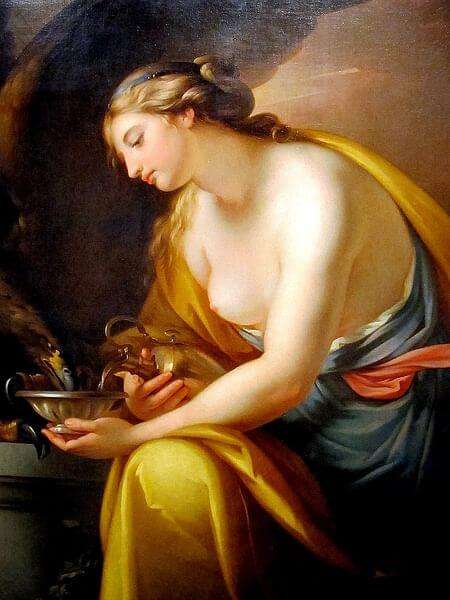
A Union of Strength and Youth: Marriage to Heracles:
The tales of Greek mythology often intertwine love, power, and divinity, and Hebe’s narrative is no exception. Her marriage to Heracles, one of the most renowned heroes in Greek lore, is a union that signifies a confluence of strength and youth. After Heracles’ ascension to godhood, following his mortal trials and tribulations, his union with Hebe symbolized a fresh start, a renewal of sorts. This marriage not only emphasizes Hebe’s stature among the Olympians but also reflects on the idea that even the mightiest seek the rejuvenation and hope that youth represents.
4. Iconography and Artistic Representations
Hebe in Ancient Artistry:
The ancient world was rich in its artistic expressions, using various mediums to immortalize tales, gods, and heroes. Hebe, with her ethereal beauty and significance, found her way into many such artistic renditions. Frescoes painted with intricate details showcase her youthful form, while sculptures, crafted by master artisans of the age, capture her essence in stone, depicting her often with graceful movements as if caught in a dance. Vases, particularly those from the Classical and Hellenistic periods, feature scenes from her life or her duties as the cupbearer, underlining the everyday reverence and recognition she enjoyed in ancient Greek society.
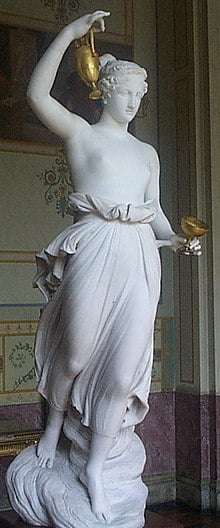
Symbols of Youth and Service:
While her form and visage are central to her representation, certain symbols associated with Hebe enhance our understanding of her role. The chalice or pitcher, often depicted in her hands or by her side, isn’t merely an artifact but a significant emblem. It represents her duty of serving nectar to the gods, emphasizing her role in sustaining their vitality and youth. Furthermore, this symbol encapsulates a deeper meaning. In the same way that the chalice holds the elixir of life, Hebe embodies the essence of youth, carrying within her the promise of vitality, renewal, and hope.
5. Hebe in Modern Culture
Contemporary Echoes of an Ancient Goddess:
Even as centuries have rolled on, the allure of Greek mythology, with its rich tapestry of tales and characters, remains undiminished in modern culture. Hebe, once an essential figure in ancient narratives, has found her place in contemporary literature, art, and media. Modern authors, inspired by her essence, weave stories that resonate with today’s audience, bridging the ancient with the new. In art, Hebe’s youthful form becomes a muse for painters and sculptors, a testament to the timeless beauty of her narrative. Moreover, in media — from film to television to digital series — there are subtle nods to her, whether it’s in the form of characters inspired by her or themes that echo her significance.
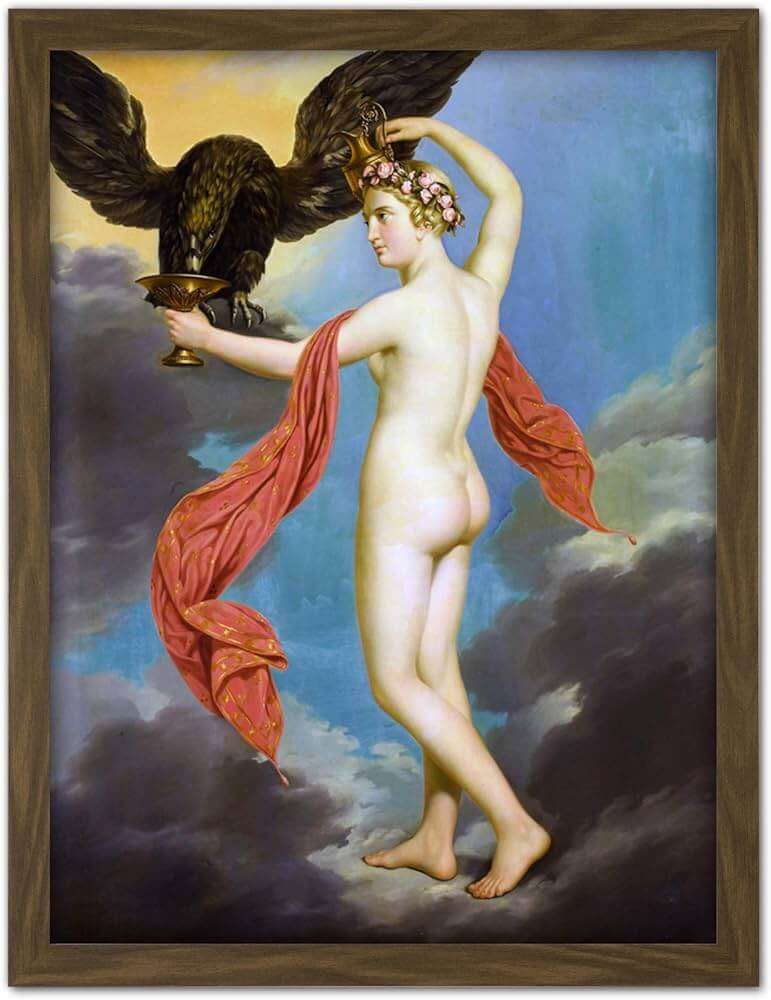
The Legacy of Youth and Rejuvenation:
Today’s discussions on youth and rejuvenation often circle back to age-old symbols and narratives, with Hebe at their core. In a world increasingly driven by the pursuit of youth — be it through science, cosmetics, or lifestyle changes — Hebe’s essence becomes ever more relevant. Her legacy is a reminder of the ancient understanding and reverence for youth, not just as a fleeting phase but as a symbol of hope, energy, and potential. Modern dialogues on rejuvenation, whether they’re about physical vitality or a renewed spirit, often find their roots in the tales of Hebe, underscoring the timeless nature of her narrative.
6. Comparative Analysis: Hebe Across Cultures
The Universal Essence of Youth:
Every culture, across timelines and geographies, has sought to understand and symbolize youth. This universal quest has given rise to figures akin to Hebe in different mythologies. Exploring these counterparts not only sheds light on the unique characteristics of Hebe but also underlines the shared human experience across cultures.
Juventas – The Roman Reflection:
In the vast expanse of Roman mythology, Juventas emerges as Hebe’s direct counterpart. Much like Hebe, Juventas symbolized youth and was often associated with the renewal of civic bodies and their members. However, while Hebe’s narrative deeply intertwines with the daily lives of Olympian gods, Juventas’ significance leans more towards societal rites and milestones in ancient Rome.
Gefjon – The Norse Connection:
Norse mythology offers Gefjon, a goddess associated with plowing, foreknowledge, and virginity. While not an exact replica of Hebe’s role, Gefjon represents a form of youthful energy, particularly in her ties with virginity and her narrative of turning her four sons into oxen to plow land, showcasing vigor and resourcefulness.
Hathor – The Egyptian Embodiment:
Hathor, the ancient Egyptian goddess of joy, feminine love, and motherhood, shares certain parallels with Hebe. Revered as a protector of women and a giver of life, her roles, like Hebe’s, transcend mere representation, delving into life’s essential facets, including rejuvenation and vitality.
Comparing Narratives and Roles:
While each of these deities shares the central theme of youth or some aspect of it with Hebe, their narratives diverge based on cultural contexts. Hebe’s role as a direct server to the gods, her marriage to Heracles, and her personification of youth make her distinct. Yet, the existence of these counterparts underscores a shared human desire to understand, celebrate, and immortalize youth and its various facets.
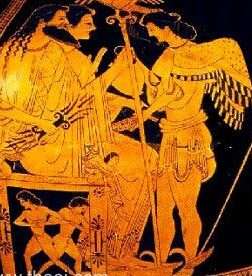
7. Conclusion:
Hebe, with her radiant embodiment of youth and vital role within the Olympian pantheon, stands as a testament to the ancient Greeks’ profound understanding and celebration of life’s transient phases. Her duties, tales, and artistic representations have transcended millennia, finding echoes in today’s culture and reminding us of the undying allure of youth. This universal fascination isn’t confined to Greek narratives alone; as seen in mythologies worldwide, from Roman to Norse to Egyptian, there lies a shared reverence for the vigor, promise, and beauty of youth. While Hebe’s enduring relevance distinctly underscores her prominence in ancient tales, it also, quite notably, highlights a collective human experience. Throughout ages and across various cultures, there emerges an age-old, unwavering admiration for that unique phase of life which, intrinsically, brims with potential, hope, and the undeniable joy of existence.
